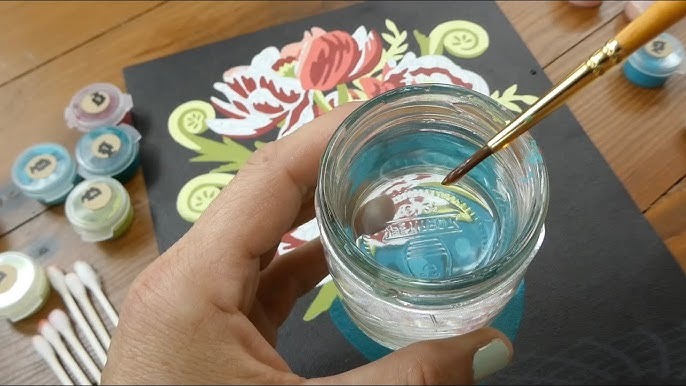How to Avoid Mistakes While Painting by Numbers (Beginner’s Guide)
Painting by numbers is one of the most enjoyable creative hobbies for beginners and experienced painters alike. It offers the satisfaction of creating beautiful art without needing advanced painting skills. Whether you’re working on a classic winter scene from the Christmas Paint by Numbers collection or a detailed festive ornament canvas, the experience can be both calming and rewarding.
But like any creative activity, mistakes can happen — especially when you’re just starting. The good news is that most paint-by-numbers mistakes are easy to avoid once you know what causes them. If you want your finished canvas to look smooth, vibrant, and professional, this guide will walk you through the most common errors and how to prevent them.
Not Preparing Your Workspace Correctly
A cluttered or poorly lit workspace is one of the biggest reasons beginners struggle. Without good lighting or a stable surface, it’s hard to paint precisely.
How to avoid it:
- Use a flat, sturdy table.
- Ensure good lighting — natural light works best.
- Keep water, tissues, and your brushes close.
- Place a cloth or sheet under your canvas for protection.
A clean setup helps you stay relaxed and focused throughout the painting session.
Not Letting Paint Dry Between Sections
Patience matters. When you move too quickly from one area to another, wet paint can smudge or bleed into neighboring sections.
Solution:
- Paint one color at a time.
- Allow each section to fully dry.
- Use a small fan if you want faster drying.
This simple habit results in cleaner lines and a more polished finish.
Ignoring the Reference Guide
Every kit includes a reference sheet showing the completed design layout. Many beginners overlook it, especially once some numbers get covered by paint.
Avoid this mistake by:
- Keeping the guide visible at all times.
- Taking a photo of it with your phone for zooming.
- Checking the guide before painting detailed areas.
Following the guide ensures you place every shade correctly.
Overloading the Brush with Paint
Thick paint leads to uneven layers, messy edges, and wasted colors.
Fix:
- Dip only the tip of the brush.
- Wipe off excess before painting.
- Apply thin layers and build coverage slowly.
Thin, smooth strokes always produce better results.
Not Cleaning Brushes Often Enough
Acrylic paint dries quickly, and once it hardens on a brush, the bristles become stiff.
Brush-care tips:
- Rinse frequently — every few minutes.
- Don’t leave brushes soaking in water.
- Use a soft cloth to dry and reshape them.
Clean brushes help you achieve clearer lines and smoother shading.
Painting in a Random Order
Jumping around the canvas may seem fun, but it makes your hand more likely to drag across wet paint.
Better method:
- Start at the top of the canvas.
- Paint light colors first.
- Move slowly downward and outward.
- Right-handed? Start top-left.
- Left-handed? Start top-right.
This simple strategy reduces smudging significantly.
Leaving Paint Pots Open Too Long
Acrylic paint dries fast — often within minutes — when left uncovered.
Avoid drying paint by:
- Closing pots immediately after use.
- Adding a drop of water if paint thickens.
- Storing pots upside-down for a better seal.
Fresh paint = smoother coverage.
Forgetting to Seal the Finished Painting
You’ve completed your painting — but without sealing, colors may fade over time.
Why sealing matters:
- Protects against dust and moisture.
- Enhances color vibrancy.
- Gives your artwork a beautiful finish.
Use a clear acrylic varnish once the canvas dries fully.
Rushing the Process
Painting by numbers should be relaxing, not rushed. When you hurry, you’re more likely to paint outside the lines or miss small sections.
Avoid rushing by:
- Setting small daily goals.
- Painting in short sessions.
- Enjoying the process instead of focusing on the finish.
The slower you go, the better the final outcome.
Not Framing or Displaying the Finished Artwork Properly
A finished painting deserves to be displayed beautifully. Some beginners toss their canvas aside or leave it unframed, which takes away from the final look.
Better options:
- Stretch the canvas over a wooden frame.
- Use a traditional or floating frame.
- Display it in your living room, hallway, or near seasonal décor.
Framing transforms your painting into a professional-looking piece of art.
Bonus Tips for Perfect Results
- Stir paints before using if they’ve been sitting for a while.
- Keep cotton swabs for correcting small mistakes.
- Take progress photos to stay motivated.
- Label similar paint shades to avoid confusion.
- Use magnifying tools for tiny details.
Small habits make big differences.
Mini FAQ for Beginners
Can I fix a color mistake?
Yes — wait for the wrong color to dry, then paint over it with the correct one.
What if the paint is too thick?
Add 1–2 drops of water and mix gently.
The number is showing through — what should I do?
Apply a second thin coat of paint.
Final Thoughts
Painting by numbers is more than just filling in spaces — it’s a calming, creatively fulfilling experience. With the right approach and attention to detail, your artwork will look smooth, vibrant, and beautifully finished.
Whether you’re painting holiday themes from the Christmas Paint by Numbers collection or getting into the festive spirit with the Christmas Ornament kits, taking your time and avoiding these mistakes will make the process even more enjoyable.
Happy painting — and enjoy every brushstroke.






